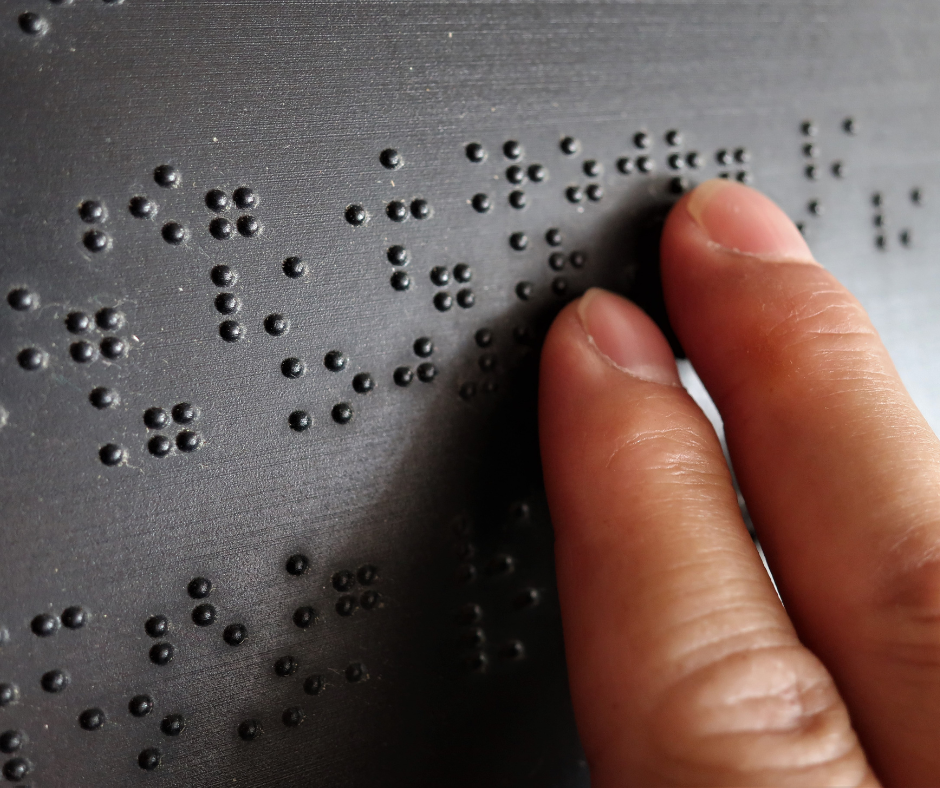Innovation and creativity have no age limit, and history has shown us time and time again that young inventors can change the world. From developing life-saving medical devices to creating revolutionary technology, young inventors under the age of 20 have made significant contributions to our society. Their inventions have improved the quality of life for many people, and their stories continue to inspire future generations of inventors. In this article, we will explore some of the young inventors under 20 who have made a lasting impact on the world through their remarkable inventions.
Louis Braille Invented Braille

Louis Braille, a Frenchman born in 1809, lost his sight in a childhood accident. He accidentally stabbed himself in the eye with one of his father’s leather-working awls. At the age of 15, he was admitted to the Royal Institute for Blind Youth in Paris, where he began to develop a system of reading and writing that could be used by blind individuals.
After studying an existing system of tactile writing used by soldiers called “night writing,” from the age of eleven, Braille refined and simplified the system, using a six-dot cell instead of a twelve-dot cell. He also developed a method for musical notation using his system. In 1829, Braille published his method, which he called “braille,” and it quickly gained popularity throughout Europe. Today, braille remains an essential tool for blind individuals, allowing them to read and write with independence and dignity.
George Nissen Invented the Trampoline
George Nissen, an American gymnast and tumbler, is credited with inventing the trampoline in the 1930s. As a young boy, Nissen was fascinated by the circus and acrobatics, and he dreamed of finding a way to make tumbling and gymnastics safer and more accessible to people of all ages.
He began experimenting with different materials and designs at the age of 16, eventually creating a prototype of the trampoline using a stretched canvas sheet and metal springs. Nissen and his friend Larry Griswold went on to found the Griswold-Nissen Trampoline and Tumbling Company in 1942, which became the leading manufacturer of trampolines in the world. Today, trampolines are a popular recreational activity for people of all ages, and they are used in a variety of sports, including gymnastics, diving, and freestyle skiing.
Gitanjali Rao Invented Tethys, Epione, and Kindly
Gitanjali Rao is a young inventor and scientist who has created several innovative technologies aimed at addressing important social and environmental issues. Among her inventions are Tethys, Epione, and Kindly. Tethys was created when Rao was only 12 and is a device that uses carbon nanotubes to detect lead in water, providing a low-cost solution for communities with lead contamination issues.
Epione is a wearable device that uses biofeedback to help individuals manage their stress levels and improve their mental health. Kindly is a mobile app that uses artificial intelligence to detect and prevent cyberbullying, helping to promote a safer and more positive online environment for young people.
Rao’s innovative work has earned her numerous awards and recognition, including the Time Magazine’s “Kid of the Year” in 2020. Her inventions serve as powerful examples of the potential of young people to use science and technology to make a positive impact on the world.
Frank Epperson Invented Popsicles

Frank Epperson, an American inventor, is credited with inventing the popsicle in 1905. When he was 11, Epperson accidentally left a mixture of soda powder and water with a stirring stick outside on a cold winter night. The mixture froze overnight, and the next morning he discovered a delicious frozen treat on the end of the stick. He called it the “Epsicle” and began selling them around his neighborhood.
Years later, as an adult, Epperson refined his invention by using fruit juice instead of soda powder, and he patented his creation as the “Popsicle” in 1923. The Popsicle quickly became a popular treat throughout the United States, and it is still enjoyed by millions of people today, especially on hot summer days.
Joseph-Armand Bombardier Invented the Snowmobile
Joseph-Armand Bombardier, a Canadian inventor and entrepreneur, is credited with inventing the snowmobile in 1935. He was just 16 years old and his father insisted he dismantle it immediately. Bombardier was inspired by the challenges of traveling in the snowy, rural areas of Quebec, where he grew up.
He began experimenting with various designs and eventually developed a vehicle that could travel over snow and ice with ease. Bombardier’s first snowmobile was called the “B7” and featured a sprocket wheel track system and a front ski. The vehicle proved to be a game-changer for transportation in cold, snowy regions, allowing people to travel faster and more efficiently than ever before.
In 1942, Bombardier founded the Bombardier Snowmobile Company, which later became the Bombardier Recreational Products (BRP) and continues to produce a wide range of snowmobiles and other recreational vehicles today. The snowmobile remains a popular mode of transportation and recreation in snowy regions around the world.
Chester Greenwood Invented Earmuffs
Chester Greenwood, an American inventor, is credited with inventing earmuffs in 1873 when he was just 15 years old. Greenwood, who lived in Farmington, Maine, was an avid outdoorsman and loved to ice skate and hunt in the cold winter months. He was frustrated with the ear pain and discomfort caused by wearing traditional hats and scarves, so he came up with the idea of earmuffs.
Greenwood’s first prototype was made from wire and fur, and he continued to refine the design over the years, eventually patenting the first “Champion Ear Protector” in 1877. Today, earmuffs are a popular winter accessory, and they are used by millions of people around the world to keep their ears warm and protected from the cold.
Xóchitl Guadalupe Cruz López Invented Warm Bath
Xóchitl Guadalupe Cruz López, she is a young Mexican inventor who created a solar-powered water heater when she was just 8 years old. Xóchitl lived in a rural area of Mexico where her family did not have access to hot water for bathing, and she was determined to find a solution to the problem. She came up with the idea of using recycled materials to create a simple water heater that could be powered by the sun.
Her invention consists of a black plastic container that absorbs sunlight and heats up the water inside. Xóchitl’s invention has had a significant impact on her community, providing access to hot water for bathing and other household needs. She has received numerous awards and recognition for her invention, and she continues to inspire young people around the world to use their creativity and ingenuity to make a difference in their communities.
Shubham Banerjee Invented a Braille Printer
Shubham Banerjee is a young inventor from California who created a low-cost braille printer when he was just 12 years old. Banerjee was inspired to create the device after learning about the high cost of traditional braille printers, which can cost thousands of dollars. He used Lego Mindstorms EV3, a robotics kit, to build the first prototype of his braille printer.
The device works by translating digital text into braille and printing it onto paper using small pins. Banerjee named his invention the “Braigo,” a combination of the words “Braille” and “Lego,” and he made the plans available online for anyone to use. His invention has the potential to revolutionize access to braille printing, making it more affordable and accessible to people around the world.
Banerjee’s innovative spirit and dedication to helping others have earned him numerous awards and recognition, and he continues to inspire young people to use their skills and creativity to make a difference in the world.
Neil Deshmukh Invented VocalEyes
Neil Deshmukh is a young inventor from New Jersey who created VocalEyes, a smartphone app designed to help people who are visually impaired navigate their surroundings. Deshmukh came up with the idea for VocalEyes when he was just 14 years old and saw a visually impaired woman struggling to cross a busy street. He realized that there was a need for a tool that could help people with visual impairments navigate the world more safely and independently.
VocalEyes uses artificial intelligence and computer vision technology to identify and describe objects in real-time, allowing users to receive audio descriptions of their surroundings. The app can also recognize faces, read text, and identify colors, helping users to navigate unfamiliar environments with greater ease.
Deshmukh’s invention has the potential to make a significant impact on the lives of millions of people with visual impairments around the world, and he has received numerous awards and recognition for his innovative work.
Albert Sadacca Invented Christmas Lights

Albert Sadacca was a young entrepreneur who is credited with inventing Christmas lights. In the early 20th century, Sadacca’s family owned a novelty lighting business in New York City, and they sold decorative lights for various holidays. However, in 1917, a tragic event occurred that inspired Sadacca to create the first electric Christmas lights. A fire broke out in a building in New York City, and many people were killed because they couldn’t escape in the dark.
Sadacca, who was just 15 years old at the time, realized that electric lights could be used to provide safer and more festive holiday decorations. He convinced his family to start producing electric Christmas lights, and the business became a huge success.
Today, Christmas lights are a beloved holiday tradition all around the world, and they continue to bring joy and cheer to millions of people every year. Sadacca’s invention has had a significant impact on the way we celebrate the holidays, and his entrepreneurial spirit and innovation have inspired generations of inventors and entrepreneurs.
Hannah Herbst Made Electricity with Ocean Waves
Hannah Herbst is a young inventor from Florida who created a device that generates electricity from ocean waves. Herbst was inspired to create the device after learning about the lack of access to electricity in many parts of the world, particularly in rural and coastal communities.
Her invention uses a buoy anchored to the ocean floor, which harnesses the energy of the waves to generate electricity. The buoy contains a motor that drives a generator, producing electrical power that can be used to power homes, schools, and other community buildings.
Herbst’s invention has the potential to provide a sustainable and affordable source of energy for people living in coastal communities, as well as for those who rely on fishing and other ocean-based industries. Herbst has received numerous awards and recognition for her innovative work, and she continues to inspire young people to use their creativity and ingenuity to make a positive impact on the world.
David Cohen Invented the Rescue Robot
David Cohen is an inventor and robotics expert who is credited with creating the world’s first rescue robot. Cohen was inspired to create the robot after seeing the devastating effects of natural disasters, such as earthquakes and hurricanes, on communities around the world. He realized that there was a need for a tool that could help emergency responders locate and rescue people who were trapped in collapsed buildings or other dangerous situations.
Cohen’s rescue robot is equipped with cameras and sensors that allow it to navigate through debris and other obstacles, and it can transmit images and other data to emergency responders in real-time. The robot has been used in a number of disasters, including the 1995 Kobe earthquake in Japan and the 9/11 attacks in New York City, where it helped to locate and rescue survivors from the rubble.
Cohen’s invention has had a significant impact on the way that emergency responders approach search and rescue missions, and it has helped to save countless lives around the world. And, interestingly enough, a year before the Rescue Robot, he built a machine designed to kill mosquito larvae to help prevent malaria.
Abbey Fleck Invented Makin’ Bacon
Abbey Fleck is a young inventor from Illinois who created a unique cooking device called Makin’ Bacon. Fleck was inspired to create the device after watching her father struggle to cook bacon in a skillet without making a mess. She realized that there was a need for a tool that could help people cook bacon quickly and cleanly, without spattering grease all over the kitchen.
Fleck’s Makin’ Bacon device consists of a plastic tray with raised ridges that allow the bacon to cook evenly and without sticking, and a lid that prevents grease from splattering. The device can be used in a microwave or a conventional oven, making it a versatile and convenient tool for home cooks.
Since its invention, Makin’ Bacon has become a popular kitchen gadget, and Fleck has received numerous awards and recognition for her innovative work. Her invention has made cooking bacon faster and easier, and has helped to eliminate one of the messiest and most frustrating aspects of cooking breakfast.
Erin Smith Invented FacePrint
Erin Smith is an inventor and computer science student who created a revolutionary technology called FacePrint at the age of 19. Smith was inspired to create the technology after watching an interview with Michael J. Fox after his Parkinson’s diagnosis. She was fascinated with the study of facial expressions and wondered if it would be possible to detect Parkinson’s via facial expressions. She started to do her own research on the topic.
After spending her spring break studying those with and without Parkinson’s reacting to videos, Smith set up facial recognition software to track the results. Her research caught the eye of The Michael J. Fox Foundation and they supported two pilot studies. Her product, FacePrint, has done well, with clinical trials at Stanford Medical School. She is continuing her career in STEM and it will be interesting to see where she goes with it.
Fionn Ferreira Invented a Way to Remove Microplastics from Water
Fionn Ferreira is a young inventor from Ireland who created a groundbreaking technology for removing microplastics from water. Ferreira was inspired to create the technology after learning about the devastating effects of plastic pollution on the environment, particularly on marine life. He realized that there was a need for a tool that could help to address this problem by removing microplastics from water sources.
Ferreira’s technology uses a magnetic liquid that attracts microplastics, allowing them to be easily removed from the water. The technology has the potential to make a significant impact on the environment, as microplastics are a major contributor to plastic pollution and can have harmful effects on marine life and ecosystems.
Ferreira’s invention has received widespread recognition, including the Google Science Fair’s Grand Prize and the European Union Contest for Young Scientists. His innovative work serves as a powerful reminder of the potential of young people to make a positive difference in the world.
Riya Karumanchi Invented the SmartCane
Riya Karumanchi is a young inventor from California who created an innovative device called the SmartCane. Karumanchi was inspired to create the device after witnessing her friend’s grandmother struggle with mobility and navigation as a visually impaired person. She realized that there was a need for a tool that could help people with visual impairments navigate the world more easily and independently. The SmartCane is a cane for those people who are visually impaired that features GPS and proximity sensors.
Karumanchi’s invention has the potential to make a significant impact on the lives of people with visual impairments, helping them to feel more confident and independent as they navigate their daily lives. Her innovative work has been recognized by numerous organizations and competitions. Karumanchi’s SmartCane serves as a powerful example of the potential of young people to make a positive difference in the world.
Conclusion
The young inventors under 20 who have changed the world remind us that age is not a barrier to making a significant impact on society. These brilliant young minds have demonstrated that with creativity, determination, and a willingness to take risks, anyone can bring new ideas and innovations to life. Their inventions have solved real-world problems and inspired others to pursue their passions and make a difference in the world. As we look to the future, we can only imagine the incredible inventions and breakthroughs that will come from the next generation of young inventors.
